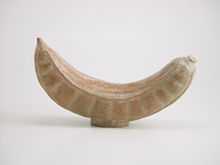Inga feuilleei
| Pacay | |
|---|---|
 | |
| Tree with fruit | |
| Scientific classification | |
| Kingdom: | Plantae |
| (unranked): | Angiosperms |
| (unranked): | Eudicots |
| (unranked): | Rosids |
| Order: | Fabales |
| Family: | Fabaceae |
| Subfamily: | Mimosoideae |
| Tribe: | Ingeae |
| Genus: | Inga |
| Species: | I. feuilleei |
| Binomial name | |
| Inga feuilleei DC. | |
| Synonyms[1] | |
| |
Inga feuilleei (after Louis Feuillée[2]), commonly known as pacay or ice-cream bean, is a tree that contains a podded fruit often cultivated for its edible white pulp surrounding large seeds. It is a legume tree native to Central and South America. All legumes have their seed encased in pods, a few of which are eaten as vegetables, green beans and snow peas, for example. A few lesser known legumes produce sweet pulpy fruits such as carob, tamarind, honey mesquite, and honey locust. Similarly, trees of genus Inga also produce sweet pods, a favorite snack of Central and South Americans.
Description
Pacay is a legume, meaning it is a relative of green beans, snap peas, alfalfa, lentils, peanuts, etc. Being in this family, it bears an unusual fruit for a tree that resembles a giant bean pod, with a sweet, refreshing, cotton-like edible fiber on the inside. The pods are generally narrow, straight, and sometimes as long as a person's forearm. They can easily be cracked open to expose the white, sugar-rich pulp, similar to cotton candy, surrounding the seeds. In English they have been called "ice-cream beans" due to the sweet flavor and smooth texture of the pulp. Naturally growing Inga trees produce abundant root nodules, which fix nitrogen, thus adding nitrogen to the soil rather than taking it away, hence benefitting the land by increasing fertility levels. Inga feuilleei is a legume tree that is medium to large in length. Its height can reach an average of 60 feet or taller and will stand temperatures as high as 30 degree Celsius when mature. At low temperatures, these trees are often damaged. These trees generally occur near river banks, so it has year round irrigation. Inga species are dependable, they produce in abundance, and they provide sustenance in bad times. A family can produce food without occupying the farmland used for food crops, because they can grow on sites neglected by agriculture. They grow rapidly, are tolerant of diverse soils, and are resistant to disease and fire. These trees are easy to establish, spread their shade quickly, and provide fruit for years. The fruits of the trees are quite edible and are often consumed by people of regions where this fruit grows. In Mexico, coffee-plantation workers can double their annual salary by selling the pods from the Inga trees used to shade the coffee plants. In Central America, the seeds are cooked and eaten as a vegetable. In Mexico, the seeds are roasted and sold outside theaters to moviegoers.
Gallery
-

Pacay Seedling 1 year
-

Pacay Bean
-

Flowers
-
.jpg)
Cross section of Bean
-

New Leaves
Early classification

Aside from pacay another common name for this species is "guama." Well known for its sweet taste, the pods have been around for a long time. They have been depicted in ancient ceramics. The Incas had pacay pods carried to their mountain capital of Cuzco. Pedro Pizarro reported that the Inca emperor Atahualpa sent to Francisco Pizarro a basketful of guamas as a gift.
Cultivation
Pacay is cultivated mainly for its fruits; the fruits of other Inga species in areas such as the Andes are by-products of trees whose main purpose is to shade plantations of coffee and cacao. Examples of these species include: I. edulis, I. vera, I. adenophylla, and I. densiflora. The fruits of I. densiflora are sold in markets and fruit stalls, especially in Colombia. In regions such as the Andean mountains, the tree produces a crop twice a year.
Future
Pacay and other inga trees have important futures. They are multipurpose trees and are potentially valuable additions to gardens, orchards, fields, hedgerows, or wayside wastelands throughout most warm parts of the world. They also have outstanding prospects as urban trees for much of the tropics. They are a source of snacks for the owners and cash for the enterprising.
References
- Author:Ad Hoc Panel of the Advisory Committee on Technology Innovation, Board on Science and Technology for International Development, National Research Council URL: http://www.nap.edu/openbook.php?record_id=1398&page=278#
- Trade Winds Fruit URL: http://www.tradewindsfruit.com/pacay.htm
- Ecocrop URL: http://ecocrop.fao.org/ecocrop/srv/en/cropView?id=6893
- EcoPort Picture Databank URL: http://ecoport.org/ep?SearchType=pdb&PdbID=19856